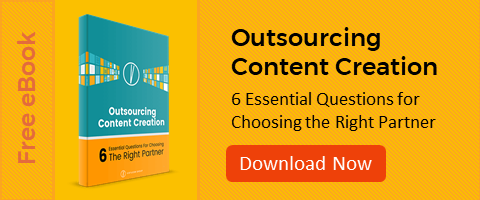Let’s be honest: there’s an important purpose behind interesting and helpful content on business blogs. For sure, informative blogging provides useful tidbits, and sometimes even “a-ha” moments, but the main purpose is to move the reader even closer to the final stage of the buyer’s journey. Successful business bloggers are always writing toward the goal of achieving high conversion rates on their content offerings – helping potential customers genuinely understand the benefits of clicking the call-to-action, or downloading a free guide, for example.
Browsers and even serious researchers don’t easily give those clicks away, however. According to Wordstream, the median conversion rate is about 2.35%, and the top 10% of AdWords advertisers have account conversion rates of 11.45%. Clearly, there must be certain characteristics of high-achieving content that cause such remarkable conversion rates. And when you’re up against those kinds of statistics, it becomes essential to identify strategies in order to break into the top rankings and finally achieve those rates you’ve been dreaming of.
But rest easy – high conversion rates don’t need to be numbers that only exist in daydreams. Let’s dive into some business blogging practices that effective content writers use to boost conversion rates.
5 Tips from the Content Writers’ Playbook for Higher Conversion Rates
1. Know the intended audience, or buyer persona, before writing begins
In order to write posts that will boost content marketing ROI and entice the reader to click on the CTA at the bottom of the page, the first step is to identify the audience you’re trying to attract. You may have already picked a topic you’d like to write about, but who is going to be interested in what you have to say about the matter?
Once you’ve chosen a specific buyer persona as your target audience, make sure you understand what would draw him or her to your post. Does your post highlight a pain point that the potential reader is trying to resolve? If you’re confident that your post will offer useful knowledge to the buyer persona, you’re ready to get started.
2. Make sure the content is directed toward a specific stage of the buyer’s journey
Just like you need to know the buyer persona you’re writing to, you also need to ensure your post is directed toward a particular stage in the customer purchase path, or buyer’s journey. Potential customers start out in the Awareness stage when they’re searching for information to help them identify problems, then enter the Consideration stage when they’ve pinpointed a want or need and are searching for ways to alleviate their problem, and finally enter the Decision stage as they aim to purchase a service that offers a solution to their need.
It can be difficult and also ineffective to try to address each of these stages in one blog post. Instead, angle your post to focus on one, specific stage so your potential customers can find your post more easily and also benefit from the useful information you’re putting forth. And don’t forget to include a CTA in your post, which is essential for converting the reader onto the next stage in the purchase path.
3. Use keywords effectively and strategically
It’s always best to write according to the thought process that naturally comes to mind when you consider your topic. However, expert writers know it’s important to frame your thoughts with strategic keywords that are designed to help potential customers find your content in the first place. Keywords allow search engines to locate relevancy and value in your content, which in turn causes your content to appear in the search results when buyers are performing research on their needs. You’ll need to learn and track important blog metrics in order to use keywords effectively. Hubspot recommends using Google Keyword Planner and other tools that can get you started.
4. Include both internal and external links
For optimal business blog performance, content writers aim to include links to other posts from their company’s blog, as well as links to outside sources that can boost their authority and trustworthiness in the eyes of search engines. But this strategy can offer other benefits that aren’t directly related to SEO. If a reader is able to easily jump to another post on your company’s blog, they’ll uncover related content, perhaps angled toward a different stage in the buyer’s journey, that will help keep them moving toward conversion. Encountering links to external sources shows potential customers that your content exists in a larger realm of authority – that your ideas offer valuable insight and make sense in the big picture.
5. Choose relevant, interesting topics that demonstrate expertise in the field
You won’t be able to convert readers if they aren’t interested in your content from the beginning. Try to relate your topic to on-trend happenings or events, like we did in a previous post:

Not only will easily-recognizable references attract readers to your post, this practice also demonstrates that you’re an expert in your field. Seeing your company as an authority on the thoughts and ideas you put forth helps increase a level of comfort that makes readers want to click the CTA to learn more about what you can offer.
Yearning to see better conversion rates for your company but having trouble implementing these strategies yourself? Considering a plan that allows you to buy blog content? Put the pressure aside and turn to a content development services firm that knows these practices, and others, inside out. To get started finding the right copywriting agency, download our free e-book to learn the qualifications you should look for when you make that important move.






